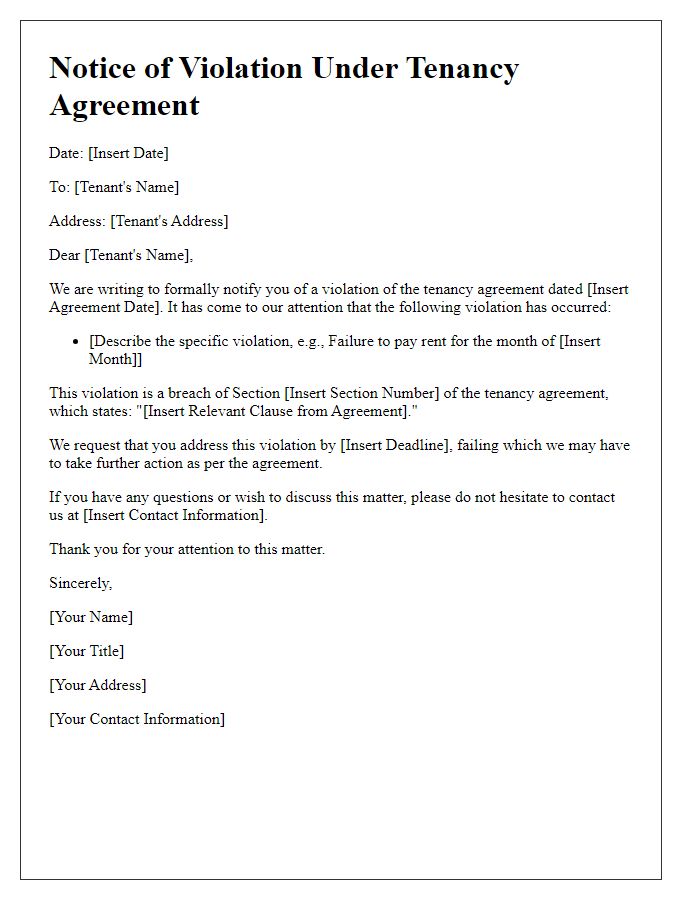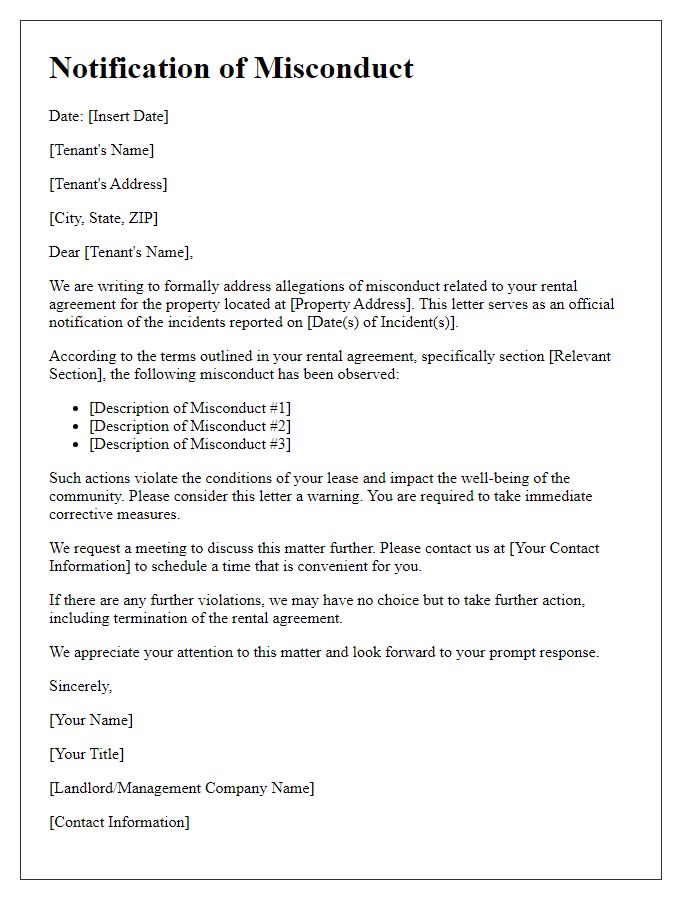Are you facing issues with a lease agreement violation? Navigating the nuances of tenant-landlord relationships can be tricky, especially when it involves a breach of contract. In this article, we'll break down the essential components of a letter template that addresses lease violations professionally and effectively. Ready to resolve those disputes? Let's dive in!

Clear identification of parties involved
In a lease agreement violation context, the parties involved are typically the landlord (lessor) and the tenant (lessee). The landlord's name, address, and contact information must be clearly identified, alongside the tenant's full name, current residential address, and account number if applicable. Accurate representation of both parties ensures legal clarity and accountability in the lease agreement. Specific property details, such as the property address and any unit or apartment number, should also be included for precise identification. Proper documentation will facilitate communication and resolution of any disputes regarding the lease terms, including breaches or violations, ensuring all involved parties understand their rights and obligations under the agreement.
Detailed description of the violation
The unauthorized alteration of the leased apartment at 123 Maple Street, including painting walls a bright neon color and installing shelving units without prior written consent, constitutes a violation of the lease agreement signed on January 5, 2022. The terms of this agreement, specifically Section 4.2, explicitly state that tenants must seek approval for any modifications to the property to maintain its original condition and value. These alterations not only compromise the aesthetic integrity of the apartment but also potentially affect neighboring units, leading to a decrease in overall property value within the building complex, managed by Greenview Realty Group. Furthermore, this breach of contract may incur penalties as outlined in Section 5.1, with the possibility of additional legal proceedings if corrective actions are not taken. Compliance is required to avoid escalation of this violation situation.
Reference to specific lease terms breached
The tenant's non-compliance with the specific lease terms regarding timely rent payment has caused a significant disruption in the landlord's property management. The lease agreement, a legally binding document outlining rights and responsibilities, clearly states that rent is due on the first day of each month. However, payments have been repeatedly received late, violating this crucial term. Additionally, the restriction on unauthorized alterations to the premises has not been respected, leading to unauthorized modifications that could potentially impact the property's integrity and value. These violations not only breach the established lease but also jeopardize the landlord's investment and the overall community standards within the housing complex.
Deadline for corrective action
A formal notification regarding lease agreement violation can highlight the specific issues involving denial of quiet enjoyment or unauthorized structural changes within the rental property. For instance, violations may arise from excessive noise disturbances, such as persistent loud music after 10 PM in residential areas, potentially disrupting neighbor peace. Property owners must include a due date for corrective action, commonly spanning 10 to 30 days, to rectify the violation, such as ceasing disruptive behavior or restoring original property condition. This timeline, which varies by state regulations, ensures tenants understand the urgency and potential consequences of non-compliance, including possible legal action or eviction proceedings.
Consequences of non-compliance
Failure to comply with lease agreement terms can result in significant consequences for tenants. Non-payment of rent (typically due on the first day of each month) may lead to late fees (often 5% of the overdue amount), eviction proceedings, or legal action. Unauthorized alterations to the property (such as painting walls or installing fixtures) can prompt landlords to seek restoration to original conditions, potentially incurring costs for tenants. Breaching pet policies (commonly prohibiting certain breeds or sizes) may result in immediate fines or termination of the lease. Repeated disturbances, like noise complaints from neighbors, could lead to lease termination, especially in multi-family units. Overall, non-compliance creates a strained landlord-tenant relationship, which may hinder future rental opportunities.













Comments